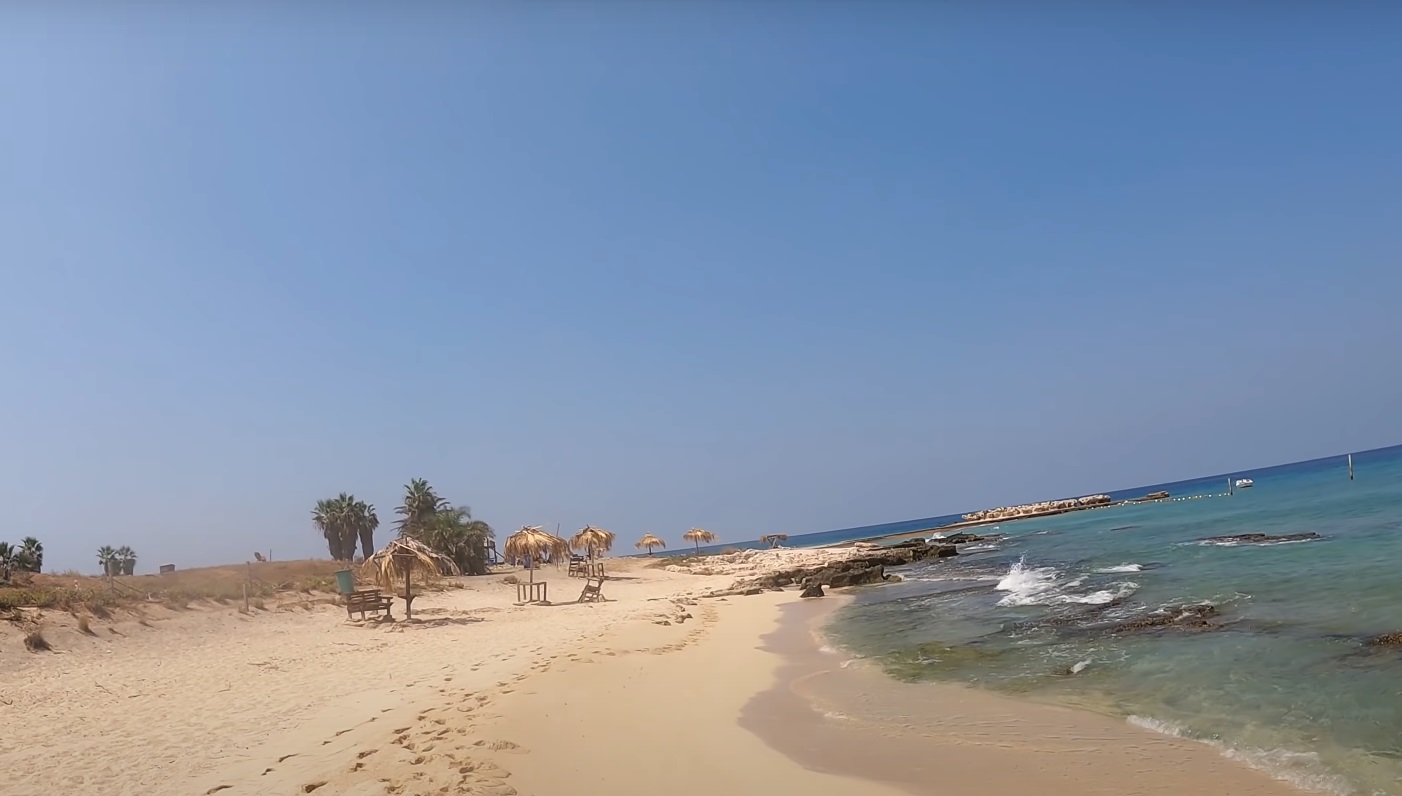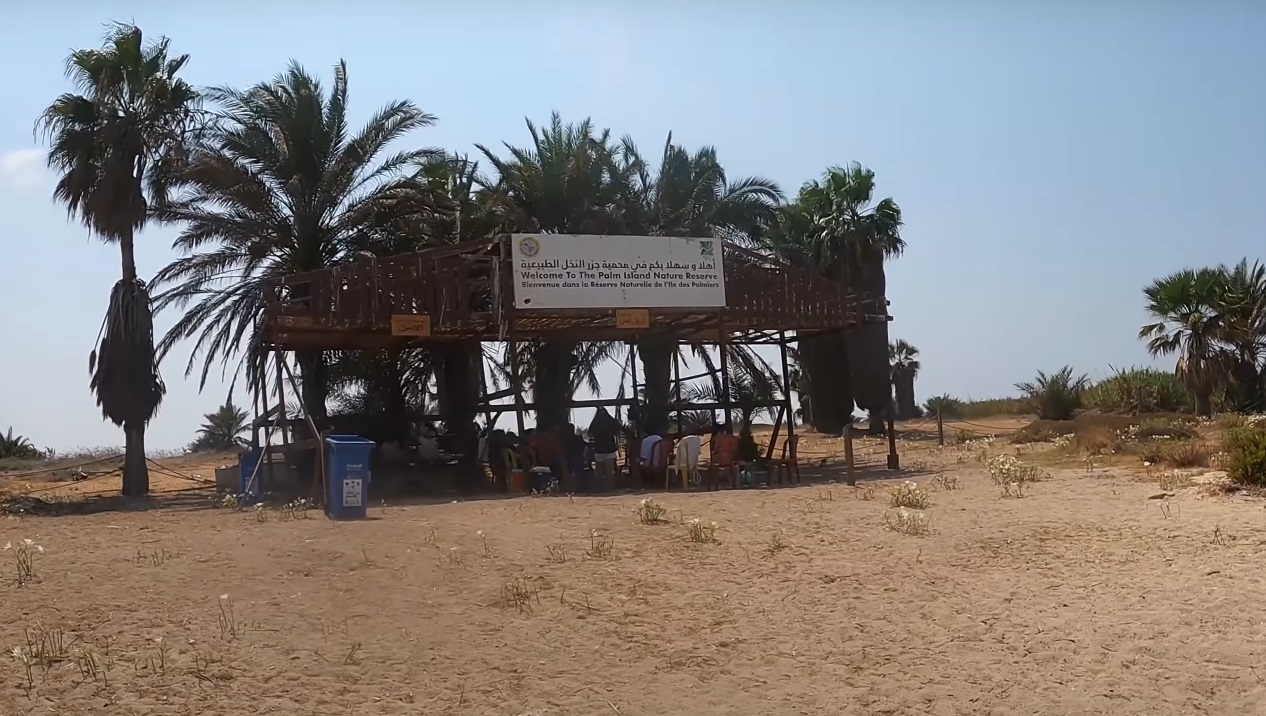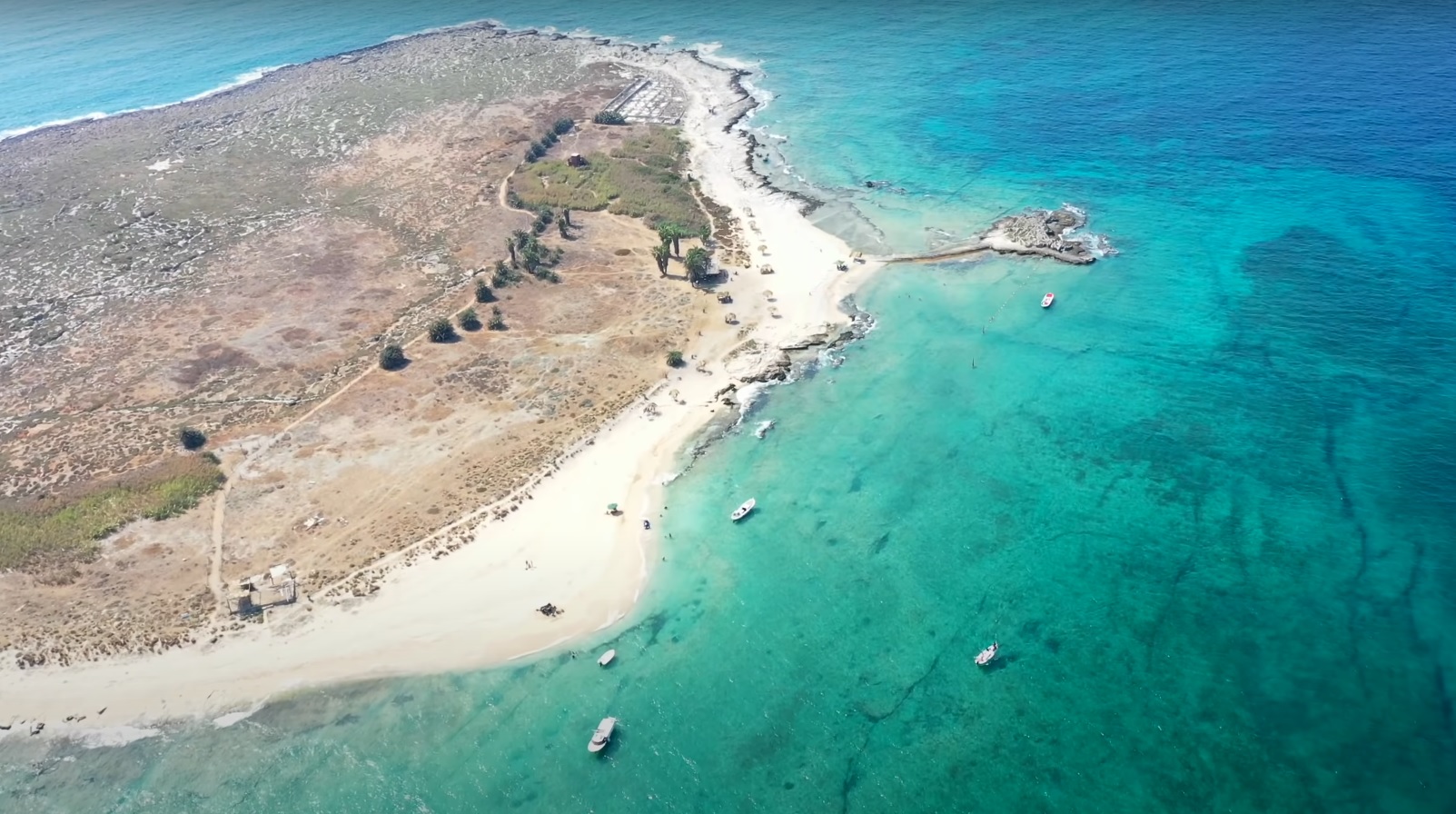Just 5.5 kilometers off the coast of Tripoli in northern Lebanon, lies Rabbit Island a tranquil haven also known as Palm Island or Jazeerat al-Araneb in Arabic.
Officially part of the Palm Islands Nature Reserve, this small, low-lying island forms the largest of a trio of rocky islets alongside the smaller Sanani and Ramkine Islands. With its pristine beaches, ecological significance, and layers of history stretching from the Crusader era to modern conflicts, Rabbit Island is far more than a picturesque getaway it’s a living testament to Lebanon’s complex past and a fragile sanctuary for endangered wildlife.
Let’s embark on a deeper exploration of this Mediterranean jewel, unraveling its history, ecology, and cultural significance.
A Nature Reserve of Global Importance
Rabbit Island spans approximately 180,796 square meters, its flat terrain rising no higher than six meters above sea level. Its shores are a study in contrasts: sandy beaches stretch along the northern and eastern sides, inviting barefoot strolls, while rugged rocky coastlines dominate from the northwest to the south, offering dramatic vistas of the sea.
The island is part of the Palm Islands Nature Reserve, established in 1992 to protect its unique ecosystem. Its international significance is underscored by several designations: it was named a Mediterranean Specially Protected Area under the 1995 Barcelona Convention, recognized as a Ramsar Wetland of Special International Importance in 1980, and listed as an Important Bird Area by BirdLife International.
The reserve’s biodiversity is a major draw for conservationists and nature enthusiasts alike. Rabbit Island serves as a critical stopover for migratory birds traveling between Europe and Africa, hosting species such as the grey heron, white stork, and various waders during their seasonal journeys.
The island’s sandy beaches are also a nesting ground for endangered loggerhead (Caretta caretta) and green sea turtles (Chelonia mydas), which lay their eggs between June and August. Hatchlings emerge in late summer, a delicate process that conservationists closely monitor to protect them from human disturbance and predation.
Rare Mediterranean monk seals, among the world’s most endangered marine mammals, have also been spotted in the surrounding waters, adding to the island’s ecological allure.
More than 300 palm trees hence the alternative name “Palm Island” dot the landscape, their roots sustained by a restored freshwater well that hints at past human habitation. This well, along with remnants of ancient structures, underscores the island’s long history of interaction with humans, a story that intertwines with its natural beauty in fascinating ways.

The Curious Origin of “Rabbit Island”
The name “Rabbit Island” might evoke whimsical images of bunnies frolicking in the sand, but today, the island is devoid of its namesake creatures. The moniker traces back to the early 20th century, during the French Mandate over Lebanon (1920–1943).
Historical accounts suggest that a French consul, seeking leisurely pursuits, introduced rabbits to the island as game for hunting expeditions. With no natural predators to keep their numbers in check, the rabbit population surged, burrowing into the sandy soil and nibbling away at the island’s sparse vegetation. For a time, the island became synonymous with these prolific creatures, earning its enduring nickname.
By the late 20th century, however, the rabbits had become an ecological nuisance. Their grazing threatened native plant species critical to the island’s ecosystem, including those that stabilized the soil and supported other wildlife.
As part of broader conservation efforts in the 1990s, authorities removed the rabbits to protect the island’s fragile balance. Today, only faint traces of their presence remain burrows long since abandoned and droppings scattered in forgotten corners.
Yet the name “Rabbit Island” persists, a quirky relic of a colonial pastime that adds a layer of intrigue to its identity.
A Crossroads of History: From Crusaders to Modern Conflict
Rabbit Island’s history extends far beyond its rabbit-filled interlude, reaching back centuries to a time when it played a role in the region’s tumultuous past. Archaeological excavations in 1973 unearthed evidence of human settlement dating to the Crusader period (11th–13th centuries).
Among the most significant discoveries was the foundation of a church dedicated to St. Thomas the Apostle, constructed by the Crusaders who controlled much of the Levantine coast during this era.
The church became the backdrop for a notable historical event in 1224, when Alice of Champagne, widow of Hugh I of Cyprus, married Bohemond V of Antioch in a lavish ceremony on the island. The marriage, chronicled by the 12th-century Arab geographer Muhammad al-Idrisi, was a strategic alliance between two powerful Crusader families, cementing political ties in a region fraught with conflict.
But the island’s role as a refuge was not always peaceful. In 1289, when the Mamluks conquered Tripoli, many of the city’s residents fled to Rabbit Island in desperation, hoping its isolation would shield them from the advancing forces. Some sought sanctuary in the Crusader church, only to be hunted down and massacred by the Mamluks, who showed no mercy.
The slaughter left the island abandoned for years, its shores stained with the memory of tragedy. This dark chapter remains a somber footnote in its history, a reminder of the region’s violent past.
The 20th century brought new challenges. During Lebanon’s Civil War (1975–1990), Rabbit Island reportedly came under fire in 1984, its remote location offering little protection from the conflict engulfing the mainland.
After the war, the island was cleared of mines and unexploded ordnance, a painstaking process that allowed it to reopen to the public in the late 1990s. More recently, the 2006 Israel-Hezbollah conflict left a devastating mark when an oil spill from the bombed Jiyyeh power plant coated the island’s shores.
The spill killed off vital microorganisms and algae, disrupting the marine food chain and threatening the island’s turtle nesting sites. Cleanup efforts, supported by organizations like the World Conservation Union and local NGOs, have since restored much of the damage, but the incident highlighted the vulnerability of this ecological sanctuary to human conflict.
Rabbit Island Today: A Seasonal Escape with a Purpose
Today, Rabbit Island is a carefully managed destination, open to the public only between July and September to balance tourism with conservation. Visitors can reach the island via a 30-minute boat ride from El-Mina port in Tripoli, where ferries shuttle passengers across the sparkling Mediterranean during the summer months.
The journey itself is a treat, with the chance to spot sea turtles, flying fish, or even dolphins breaking the surface along the way.
Upon arrival, the island’s simplicity is striking. There are no shops, toilets, or trash cans visitors must come prepared with their own supplies and take all waste back to the mainland. This minimalist approach is deliberate, designed to minimize human impact on the island’s fragile ecosystem. Walking trails, some fenced to protect nesting areas, guide explorers around the island, offering glimpses of its sandy beaches, rocky cliffs, and the ruins of its Crusader past.
Snorkeling and swimming are popular activities, with the clear waters revealing a vibrant underwater world of fish like sea bream, parrotfish, and grouper. For birdwatchers, the spring (mid-April to mid-May) and autumn (late September to late October) migrations are prime times to visit, though access during these periods requires special permission due to conservation restrictions.
Turtle enthusiasts may also catch a glimpse of hatchlings emerging from their nests in late July or August, though nighttime visits to witness this spectacle require a permit and coordination with local conservation groups. These measures reflect the island’s commitment to protecting its endangered species while allowing limited public access a delicate balance that defines its modern identity.

Conservation Efforts and Community Involvement
The Palm Islands Nature Reserve, including Rabbit Island, has benefited from several conservation initiatives over the years. The EU-funded Promapir project, for example, introduced entry fees to fund critical efforts like hiring rangers, managing waste disposal, and maintaining habitats.
Local fishermen, who have long relied on the surrounding waters for their livelihoods, are often recruited as guides and stewards, providing them with alternative income while fostering a sense of ownership over the island’s preservation. Educational programs also aim to raise awareness among visitors, emphasizing the importance of leaving no trace and respecting the natural environment.
Despite these efforts, challenges remain. Pollution from the mainland, including plastic waste and untreated sewage, occasionally washes up on the island’s shores, threatening marine life. Climate change poses another long-term risk, with rising sea levels and warming waters potentially disrupting the nesting patterns of turtles and the migration routes of birds. Addressing these issues will require broader regional cooperation and sustained funding goals that local and international organizations continue to pursue.
Cultural Significance and Local Lore
Beyond its ecological and historical roles, Rabbit Island holds a special place in the cultural imagination of Tripoli’s residents. For many, it’s a cherished escape from the bustle of the city, a place where families picnic on the sand and children splash in the waves.
Local folklore often weaves tales of the island’s past, with some elders recounting stories of hidden treasures buried by Crusaders or ghostly apparitions tied to the 1289 massacre. While these tales may lack historical evidence, they add a layer of mystique to the island, enriching its allure for visitors and locals alike.
The Future of Rabbit Island: A Call to Protect Paradise
Rabbit Island is more than a scenic getaway; it’s a microcosm of Lebanon’s resilience and fragility. Its history from Crusader weddings to colonial rabbit hunts to modern-day conservation battles reflects the broader story of a region shaped by conflict and adaptation.
As a nature reserve, it stands as a beacon of hope for endangered species like the loggerhead turtle and Mediterranean monk seal, offering a glimpse of what can be achieved through dedicated environmental stewardship.
Yet, its future remains uncertain. The twin pressures of tourism and environmental degradation loom large, and the island’s survival will depend on continued vigilance and innovation. For now, Rabbit Island remains a rare sanctuary, a place where the past and present converge in the lapping of the waves and the rustle of palm fronds.
For those willing to make the journey, it offers an unforgettable experience: a chance to step into a slice of paradise, to walk in the footsteps of history, and to witness nature at its most resilient. Pack your bags, tread lightly, and discover a Lebanese treasure that’s as fragile as it is extraordinary.

